The brewer's rice “Akebono” is cultivated in the Field Science Center. And is used for brewing Okayama University brand Japanese sake “Oh Okadai”. The hands-on experience of “Oh Okadai” brewing was projected in five-part series from February 22 to April 1 at Miyashita Sake Brewery Co., Ltd.
1. How is sake “Oh Okadai” made? And taking a study trip to a factory (February 22).
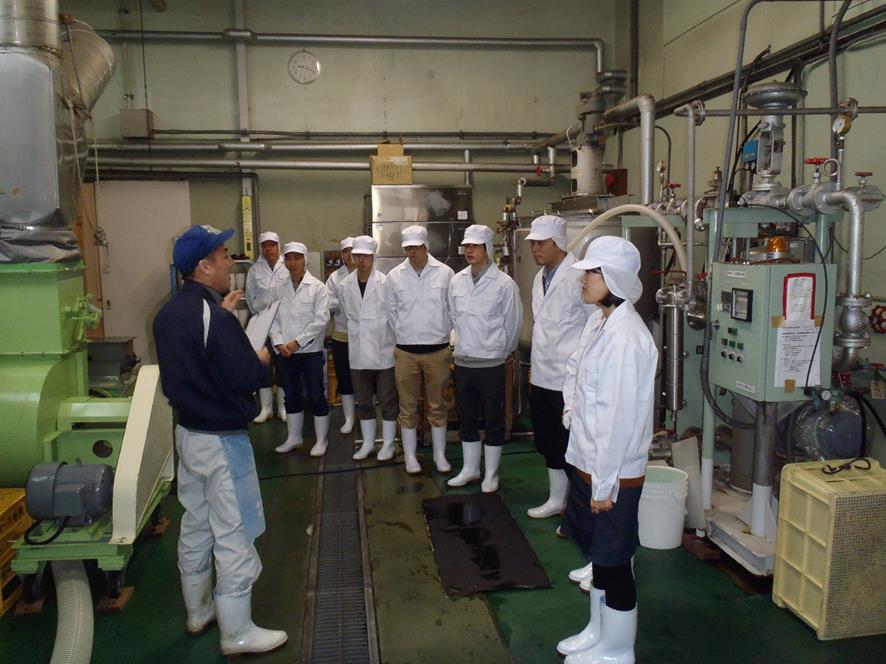
2. Koji (mold) making (February 25).
In sake brewing, there is a common saying “first koji, second moto (the yeast starter) and third tsukuri (the main mash)”, which refers to the brewing processes with the order of importance of their impacts on the quality of sake. The koji making is the most important process.
At first, cool down the steamed rice, and bring into a koji room at a temperature approximately 32℃. Rice is spread out on a long table, and scattered koji spores onto the rice. Then, rice is mixed well and is heaped up and covered with cloth to keep the temperature and humidity constant. The scattered spores germinate and extend their hyphae. After that, the koji is mixed and spread out again. About two days after, koji-making is finished.
The “koji seeds” (spores of koji-mold) are scattered over the rice.
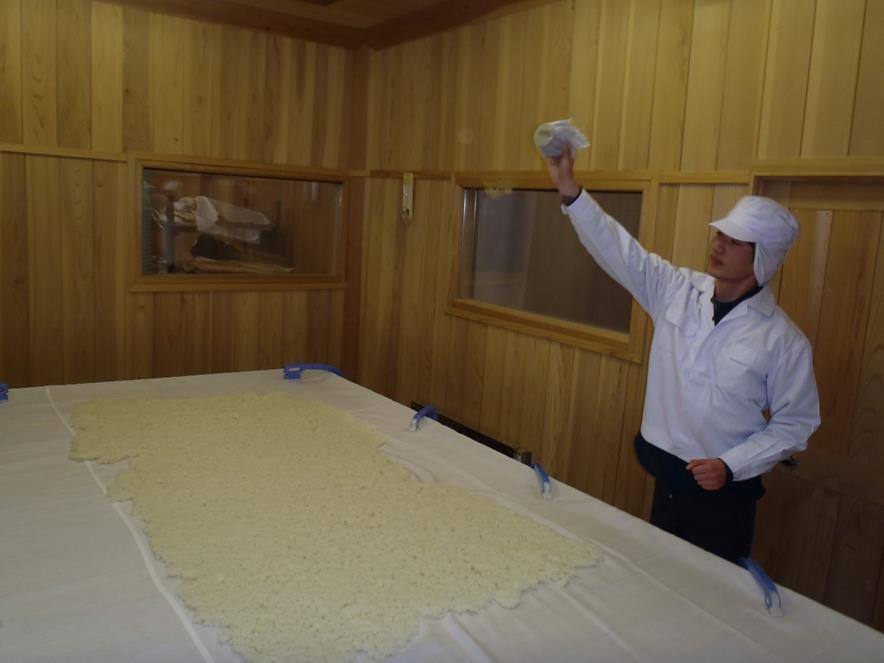
Good job! The excellent fragrant koji was prepared.
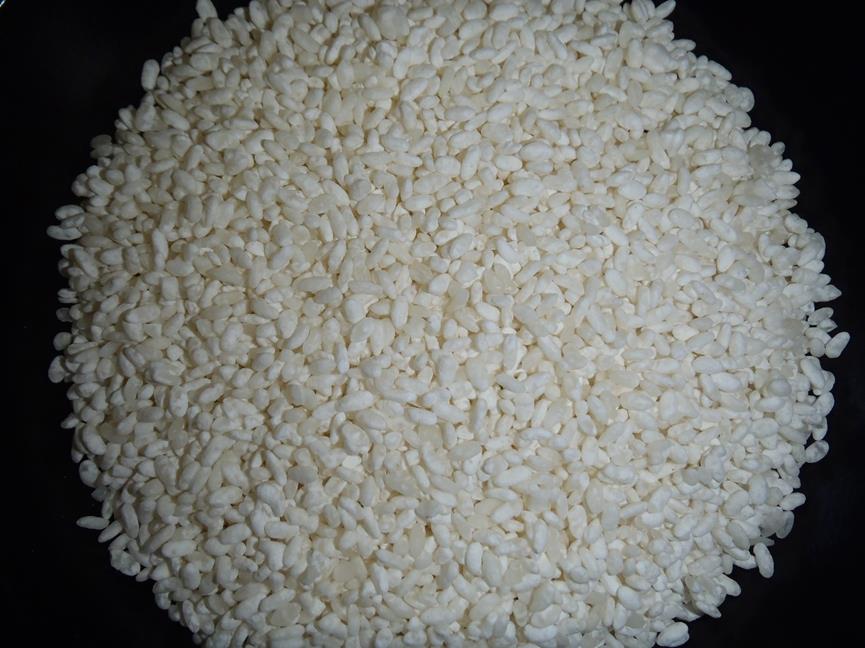
3. “Shubo” (main mash) making (March 2).
To develop the large amount of yeast for fermentation, “Shubo” (main mash) is prepared. First, water, rice koji, and steamed rice are mixed into a tank, and cultured yeast is added. The lactic acid must be added to suppress the growth of harmful bacteria. The skillful management and careful control of temperature are needed to prepare “Shubo”, also called “Moto”, have a pure culture of yeast. Making “Moto” is an important process in brewing sake.
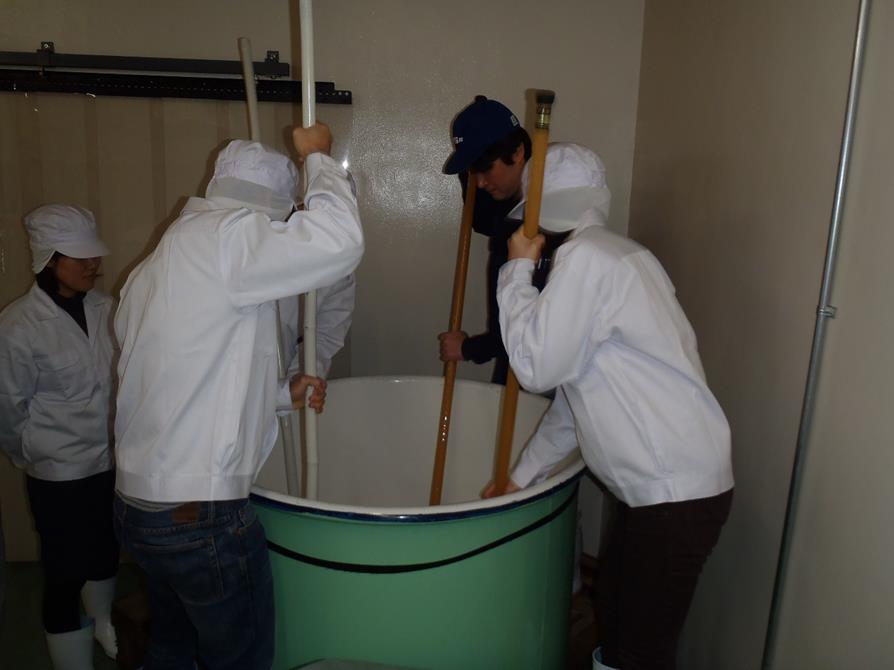
4. Moromi (main mash) making (March 11).
To make “Moromi”, the main mash, put the steamed rice, rice koji, water, and shubo into a fermentation tank. The “Sandan-jikomi” (three-step addition method) is applied. This method is effective to avoid lowering the yeast density and the acid level in the mash, so that the bacterial contamination is prevented.
On the first day, the seed mash, 1/6 of the total steamed rice, koji, and water are used. On the third day, 1/3 of the steamed rice, koji, and water are added. On the 4th day, 1/2 of the steamed rice, koji, and water are added. The punching down of the tank (a process called 'kai-ire') is carried out every day (the following photo).
The fermentation tank is kept at a temperature about 15℃. After three weeks of fermentation, the alcohol concentration of the moromi will reach 18%.
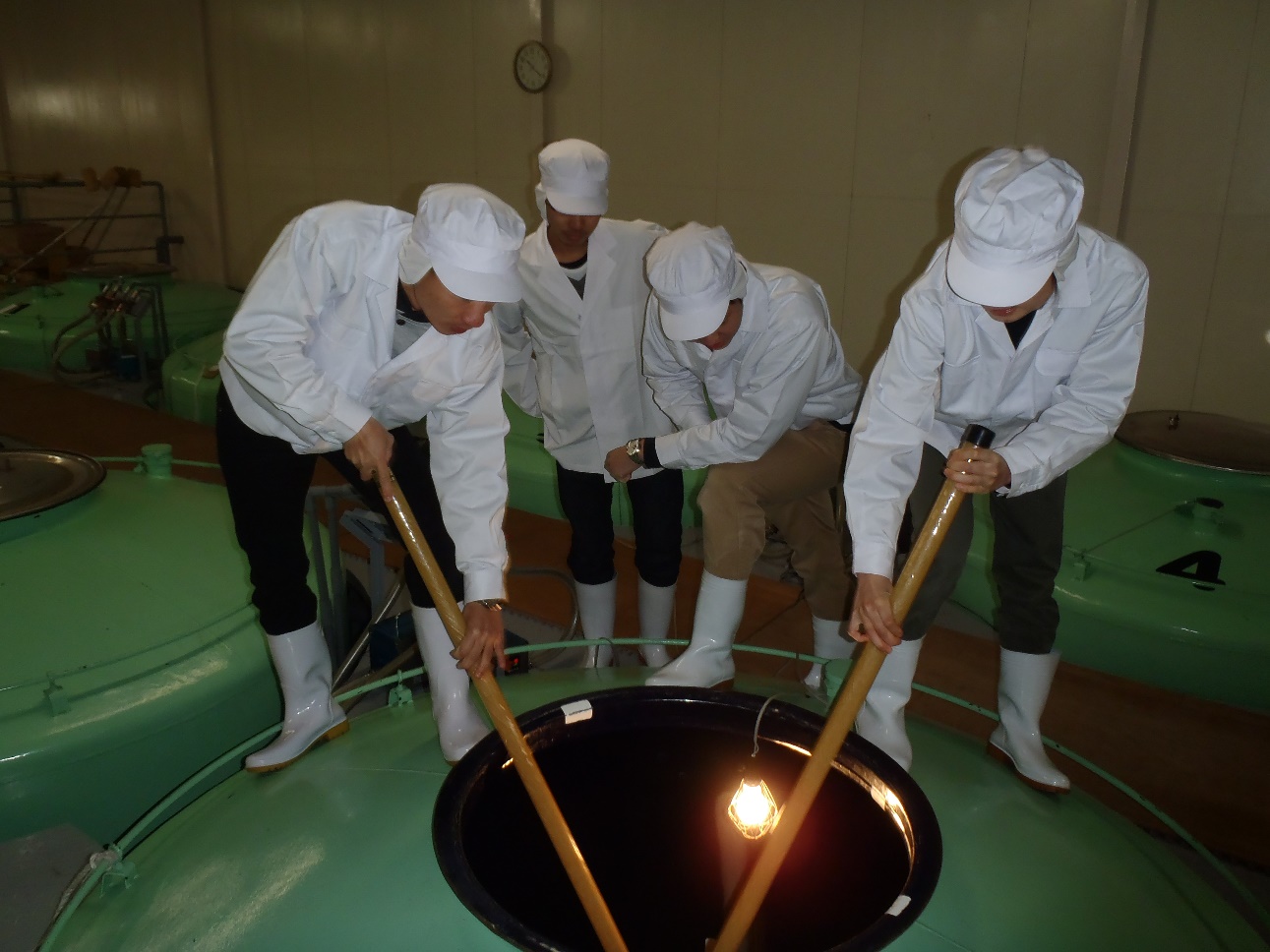
5. Sake tasting (scheduled for April 1), photo was taken in 2015.
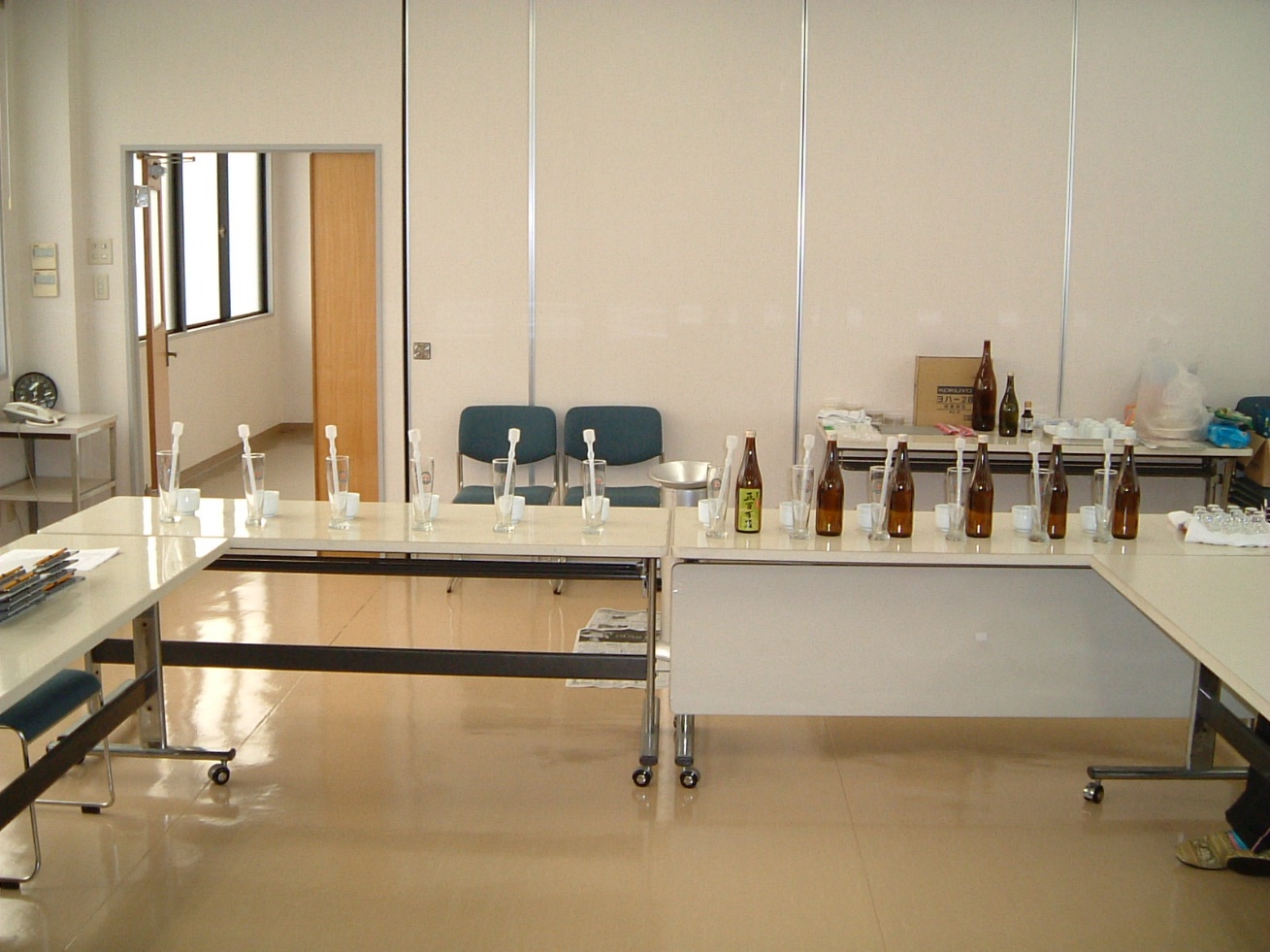
The hands-on experience of “Oh Okadai” brewing
March 28, 2016